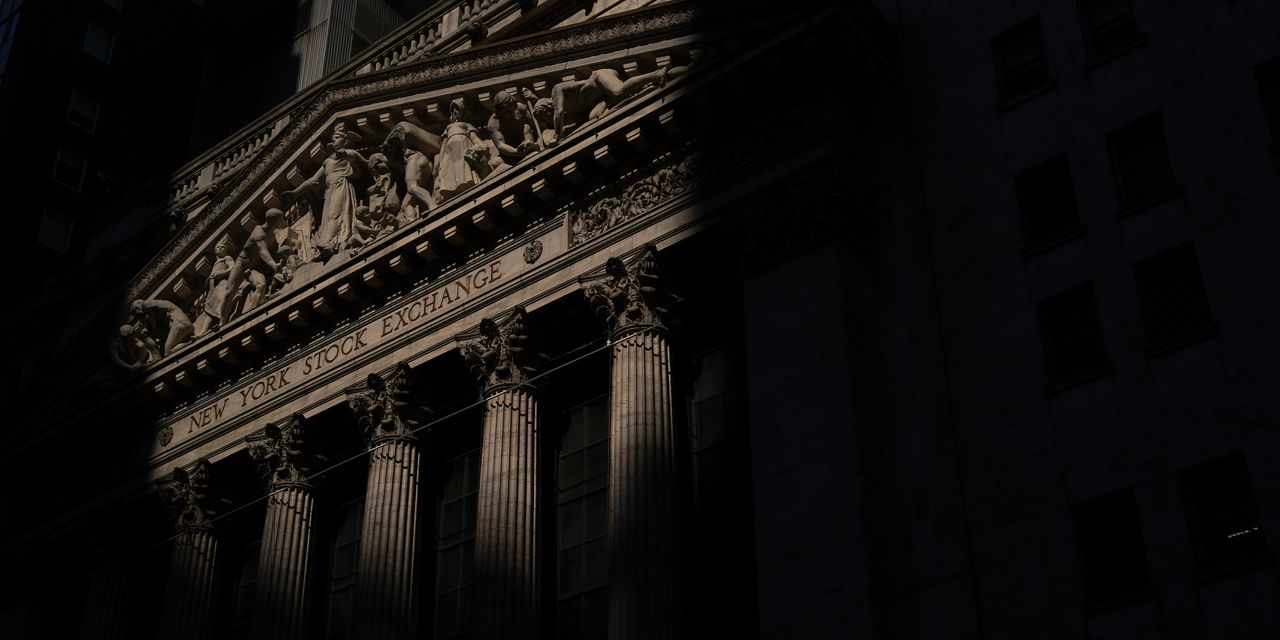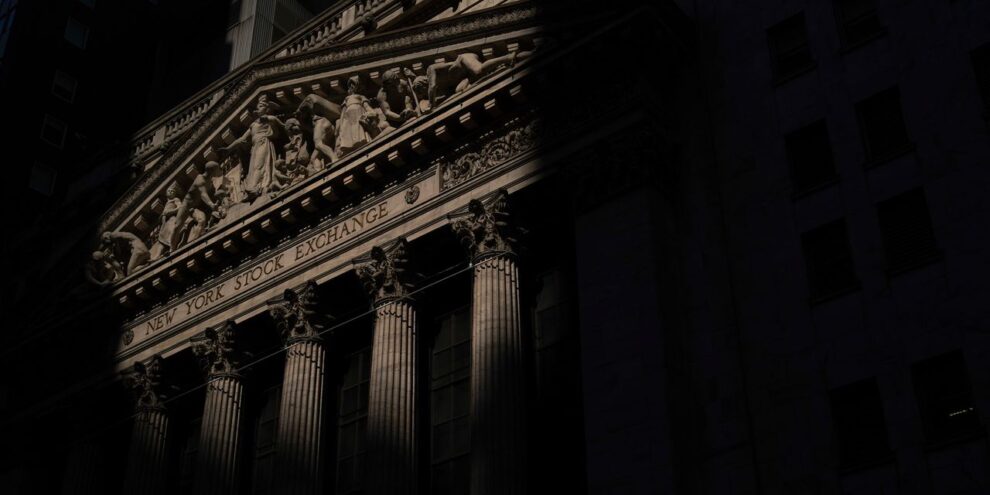
Federal Reserve Chairman Jerome Powell’s brief, but blunt Jackson Hole speech on Friday sparked a sharp selloff in stocks and other financial assets as Wall Street reacted to his vow to bring inflation back down to the central bank’s 2% goal.
The S&P 500 SPX, -2.19% lost 97 points, or 2.3%, to trade at 4102. The Dow Jones Industrial Average DJIA, -1.91% slumped 647 points, or 1.9%, to 32,644, after gaining 322.55 points on Thursday. The Nasdaq Composite COMP, -2.70% was off 366, or 2.9%, to 12,273.
“Reducing inflation is likely to require a sustained period of below-trend growth,” said Powell in a highly anticipated speech at this year’s Jackson Hole economic policy symposium on Friday.
“While higher interest rates slower growth and softer labor market conditions will bring down inflation,” he added. “They will also bring some pain to households and businesses. These are the unfortunate costs of reducing inflation, but a failure to restore price stability would mean for greater pain.”
“I think what he’s trying to reiterate to the markets, so that market prices have prepared, is that there’s no pivot,” said Jim Caron, chief fixed income strategist at Morgan Stanley Investment Management. “What Powell was really trying to hammer-home and (what) people on the FOMC do is that ‘we’re not letting people think we turn more dovish’. He did not even mention data dependence today.”
Investors were waiting all week for Powell’s speech for clues to the central bank’s likely next steps as it attempts to tame high prices that have ratcheted up the cost of living.
While the speech wasn’t part of a central bank policy meeting, when rate decisions typically happen, many investor were bracing for an aggressive tightening message that could dash hopes for a rate pause, or even a cut next year.
“Markets have fallen down because there was a narrative that was floated around, believed by many that there was a pivot by the Fed,” Caron told MarketWatch on Friday. “One of the things that maybe contributed to that narrative was that Powell said, now that we hiked rates to two and a half percent — we are close to the neutral level. But today he reiterated the fact that we need to move well above in order to contain inflation. So I think maybe that’s the only new thing that came out, really boil it all down.”
See: Dow skids 600 points as Powell vows to fight inflation ‘until the job is done’
Rick Rieder, BlackRock’s chief investment officer of global fixed income, took Powell’s statement to mean that the Fed “won’t be easily swayed into reversing hikes next year”, and will stay with the elevated rate “for a long time.”
“The Fed has clearly been (appropriately) rushing to get to a destination of inflation-denting restrictive rate (and liquidity) policy in order to break extremely high levels of inflation, while hopefully not thrusting the economy into a deep recession,” wrote Rieder in a Friday note.
Concerns about a “hawkish” Powell message weighed on the three major stock indexes earlier this week, putting a pause to their rally off the mid-June lows. That upswing helped the Nasdaq exit bear-market territory and the Dow and S&P 500 to briefly experience renewed upward momentum.
The S&P 500 was off about 2.7% for the week as of Friday, while the Dow was down 2.9% and the Nasdaq was off 3.1%.
What other Fed officials said
A chorus of Fed officials insisted in recent days that its inflation fight still has a long way to go, while also emphasizing that central bank decisions should remain data dependent.
Here’s what Fed speakers have been saying:
- Kansas City Fed President Esther George said Thursday that signs of easing in U.S. inflation in July aren’t yet a convincing trend, as part of a series of interviews that mark the unofficial start of the Jackson Hole symposium.
- St. Louis Fed President James Bullard also said Thursday the central bank’s benchmark policy interest rate should continue to be increased swiftly, bringing it to a range of 3.75%-4% by year-end, in a CNBC interview.
- Philadelphia Fed President Patrick Harker said he wants to see the policy rate top 3.4%, from a current 2.25%-2.5% range, and then “sit for a while.”
- Atlanta Federal Reserve President Raphael Bostic said Friday he’s leaning toward a half a percentage point interest rate hike in September following the better-than-expected PCE inflation data released earlier in the morning.
Federal Reserve officials in July agreed that it was necessary to move their policy rate high enough to slow the economy to combat high inflation, according to minutes of the Federal Open Market Committee’s July 26-27 meeting. Their talk since July has gotten tougher.
Fed’s preferred inflation measure updated
Powell speech came as the Fed’s preferred inflation gauge, the personal-consumption expenditures price index, for July showed price pressures eased and dropped for the first time since April 2020. The index showed a year-over-year rise of 6.3% in July, down from 6.8% in June.
“Today’s data show that both the pace of consumer spending increases and inflation increases are slowing down,” said Chris Zaccarelli, chief investment officer for Independent Advisor Alliance, in a Friday note. “However, both spending and inflation are continuing to increase, so the Fed needs to reverse that trend and begin the process of bringing inflation back down to 2%, or at least below 3%.”
“Inflation is running well above 2% and high inflation has continued to spread through the economy while the lower inflation readings for July are certainly welcome,” said Powell. “A single month improvement falls far short of what the committee will need to see before we are confident that inflation is moving down.”
Trading across other financial markets was choppy after Powell’s speech. Two, 10- and 30-year Treasury yields pivoted higher. The yield on the 2-year Treasury TMUBMUSD02Y, 3.412% rose to 3.43%. The yield on the 10-year Treasury TMUBMUSD10Y, 3.046% advanced to 3.04%.
Gold prices GC00, -1.32% GCZ22, -1.32% for December delivery lost 1.4%, to $1747.70 per ounce on Comex. The ICE U.S. Dollar Index DXY, +0.26% a gauge of the dollar’s strength against a basket of rival currencies, was up less than 0.1%.
Cryptocurrency prices retreated with Bitcoin BTCUSD, -4.16% declining 3.8% to $20,818 in recent trade, while Ethereum’s Ether token ETHUSD, -7.66% was down 6.5% at $1,596.
James Paulsen, chief investment strategist at the Leuthold Group, said investors should remember that inflation now “ravaging” the U.S. economy likely will be cyclical due, in part, to America’s aging population and to technology that boosts productivity.
“Regardless of what the Fed does this fall, inflation is apt to soon resume its secular disinflationary character exhibited over the last several decades,” Paulsen said, in a Thursday client note ahead of Powell’s speech.
Top economists and policy makers from across the country are meeting in Jackson Hole from Aug. 25-27 for an annual economic policy symposium hosted by the Kansas City Federal Reserve. It is the first in-person conference in three years, following gatherings conducted by video in 2020 and 2021.











Add Comment